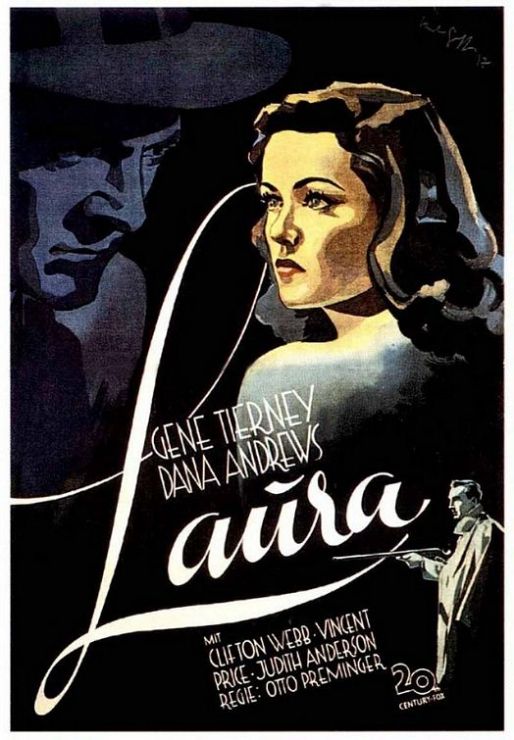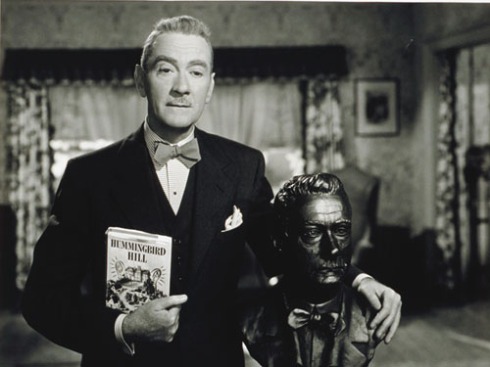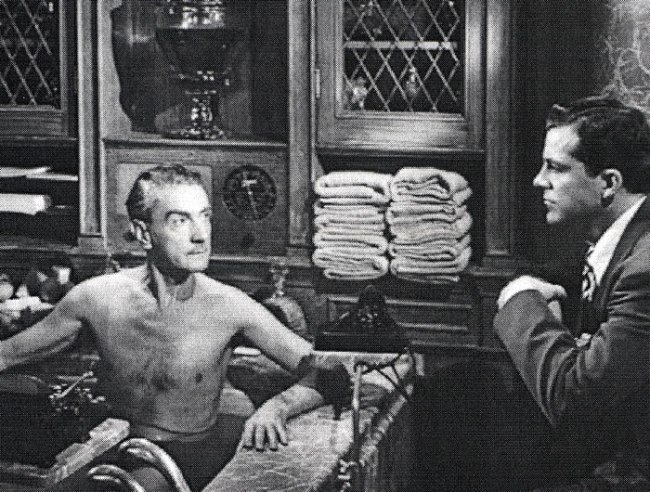Otto Preminger’s Laura is a film riddled with insinuations about gender roles and homosexuality. The film is about a detective who is investigating the murder of Laura Hunt, whom in actuality was never killed, and the search for the murderer who wrongfully killed someone. Waldo Lydecker is Laura’s good friend who mistakenly killed Diane Redford in Laura’s apartment. Waldo’s character is very important when discussing gender roles and homosexuality.
Waldo Lydecker is a very smart and whimsical man who is always quick with a sassy comeback. He is a famous writer/journalist that Laura looked up too. Waldo’s character is very unique because he does not abide by conventional film gender roles or sexuality. His gender role is unique because Waldo’s it fits closely with that of a strong female character more than a male. His character is portrayed much like that of a female. Unlike the men of the time who are quick to throw a punch or pull a gun, Waldo slanders and ruins his “enemies” lives through his column. Waldo’s enemies are any man that tries to date or get close to Laura. Waldo’s character is also very controlling over things. He is very controlling over Laura and he doesn’t like things or people he cannot control. Waldo’s character seems to be hateful and resentful towards almost all men. It seems as though he has some type of built up frustration and irritation.
Waldo Lydecker is also an important character because of the homosexual insinuations that the movie implies. Throughout the film there are many hints and clues that led you to believe Waldo’s character is homosexual. The first scene with Waldo takes place in his bathroom with him in the tub. Waldo is completely nude and openly talking with detective Mark McPherson. He then gets out of the tub, and has Mark hand him a robe to put on. Waldo’s house is also very lavish. It is filled with art, statues, fancy curtains and furniture. He keeps everything very clean and takes very good care of his artwork and statues. This is a key insight into the characters sexuality, because film regulations at the time limited characters from being outright homosexual. This led to directors finding ways to portray the sexuality of a character through his belongings and attire. Waldo’s attire in the film is also somewhat effeminate. He is always seen with a big white flower on the lapel of his coats. Waldo’s interest in art can be seen when he asks detective McPherson for his vase and his clock back from Laura’s apartment. Waldo’s character touches upon not only gender roles but the role of sexuality in film. Laura is a fantastic film noir which keeps you active in your search for gender roles and sexuality regarding the characters.”



Jamie,
This post is quite good. You usefully focus your discussion around how Preminger portrays Waldo’s gender and sexuality. The evidence you employ to support each claim is convincing, and I also like that you consider how gender and sexual identities are mutually imbricated in the film. For instance, you mention that Waldo’s “gender role is unique because Waldo’s it fits closely with that of a strong female character more than a male.” As Dyer points out in his landmark essay on homosexuality in film noir, this was one of the most common ways to signal that a character was gay–that is, by giving him or her traits of the opposite sex. This is a point you might explore even further.
Do be sure to proofread your posts carefully, as you have a few typos (including the line I quoted). Otherwise, nice job here!
MT